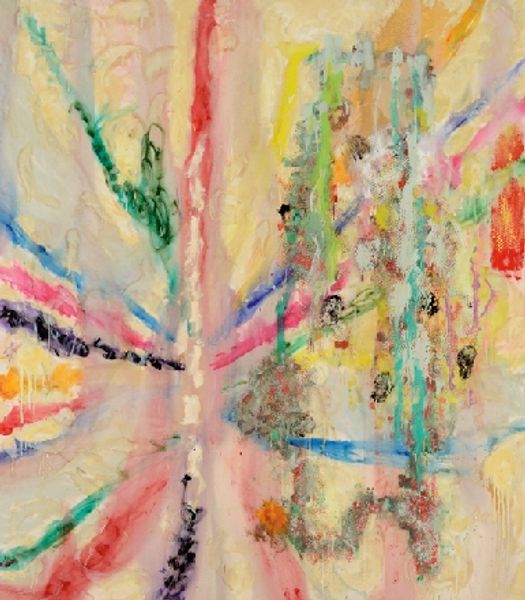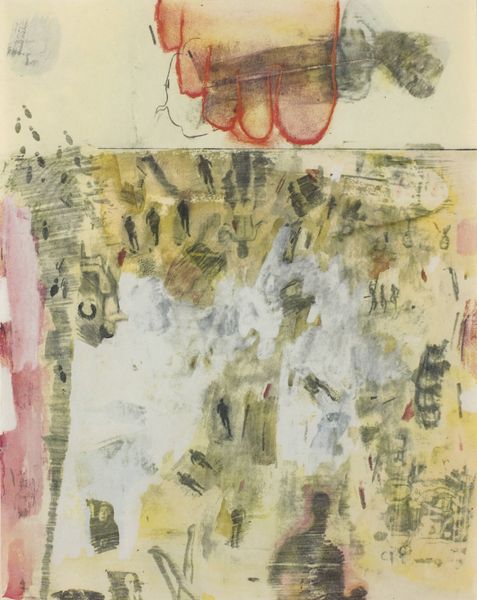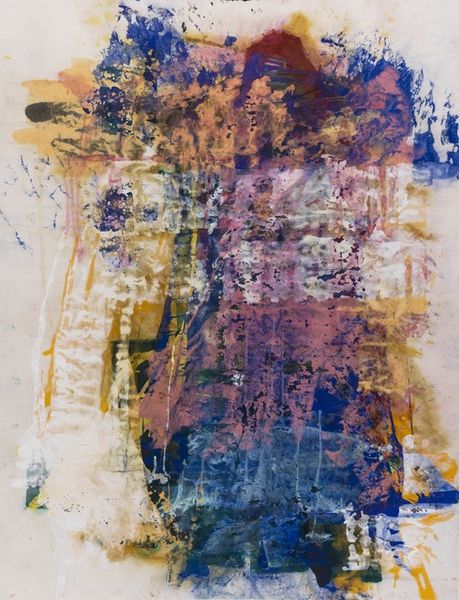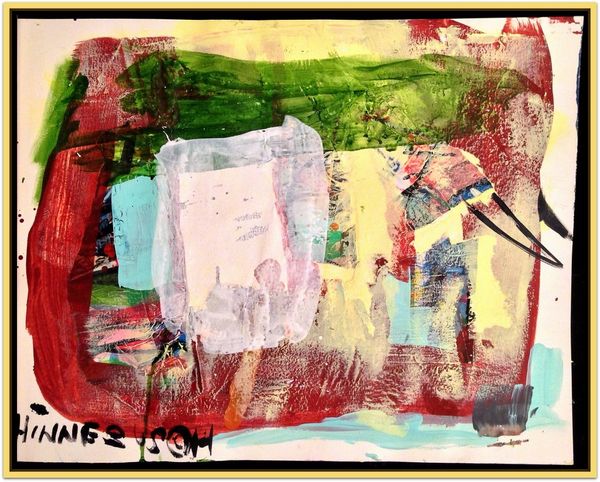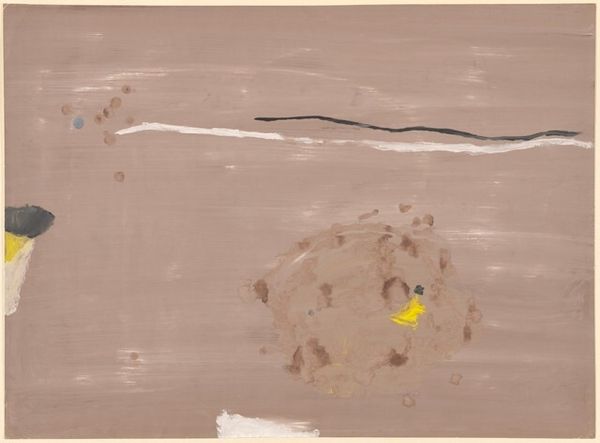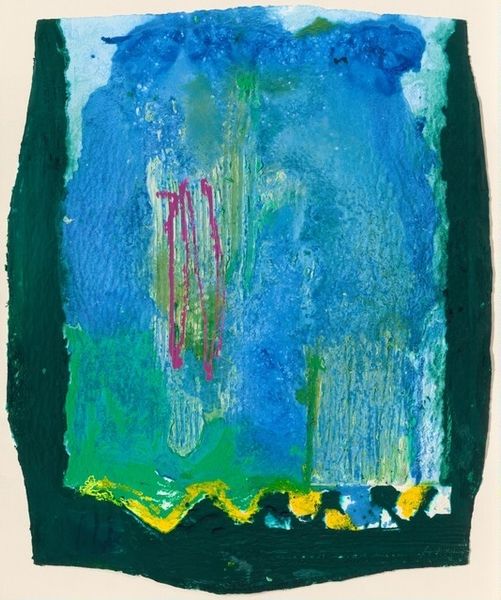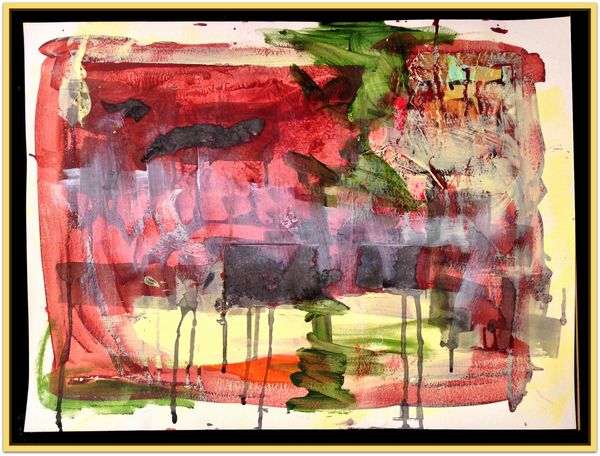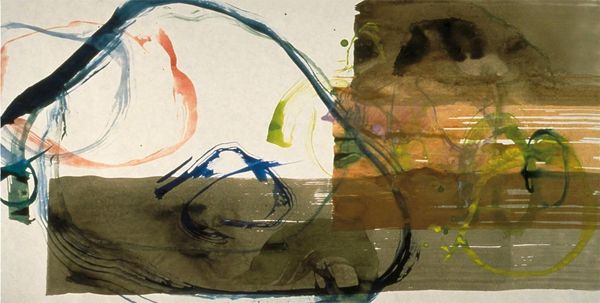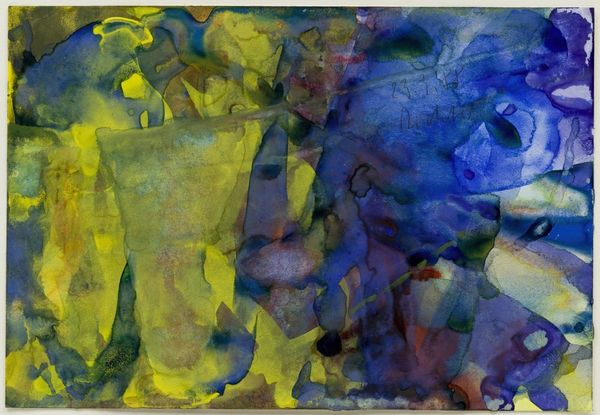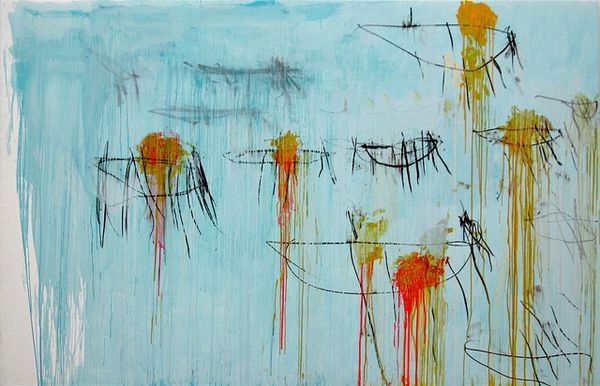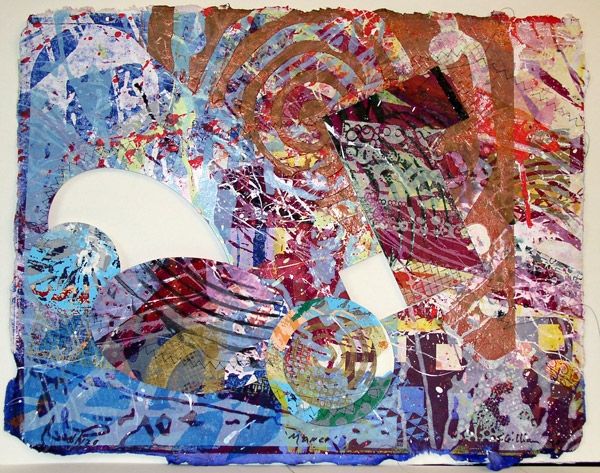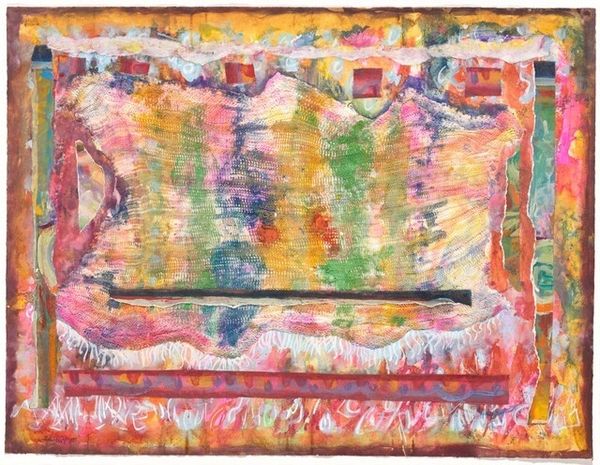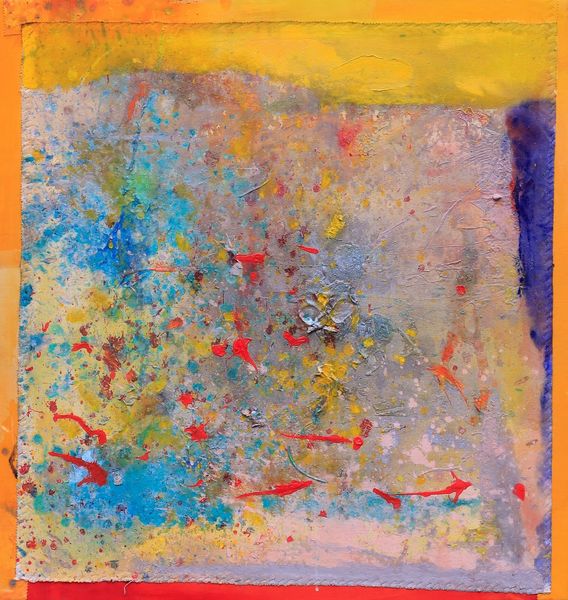
Dimensions: 17.78 x 20.32 cm
Copyright: Rudolf Láng,Fair Use
Editor: Rudolf Láng's "Baby Carriage" from 1961, rendered in watercolor, strikes me as both whimsical and strangely unsettling. The colors are warm, almost inviting, yet the subject is abstracted to the point of near-obscurity. How do you interpret this work within its historical context? Curator: That sense of unease is palpable, isn’t it? Considering its creation in 1961, amid Cold War anxieties and societal shifts, Láng's abstraction moves beyond simple representation. It engages with a period where traditional notions of family and security were being questioned. Does the deconstructed image of a "baby carriage" suggest perhaps a fragility, even a threat, to innocence and new life during that time? Editor: That’s fascinating. I hadn't considered the socio-political implications. So the vibrant colours aren't necessarily cheerful but could represent something more complex? Curator: Exactly. Think about the visual language being used – loose lines, layered washes, forms that suggest rather than define. Láng might be reflecting the era's destabilization through artistic means, almost a rejection of rigid structures in favor of ambiguous form. Do you notice how the lines almost create a cage around the imagined figures below? Editor: I see it now, almost like an attempt to protect, but it’s failing somehow. The colours seem to seep out. Thank you – I now see it’s about more than just a baby carriage. Curator: It certainly reflects on the historical context as an integral element of the image. It really pushes us to consider art's role in expressing societal anxieties through symbolic and representational visual form. I’ve enjoyed discussing this work with you, I also noticed new ideas!
Comments
No comments
Be the first to comment and join the conversation on the ultimate creative platform.
